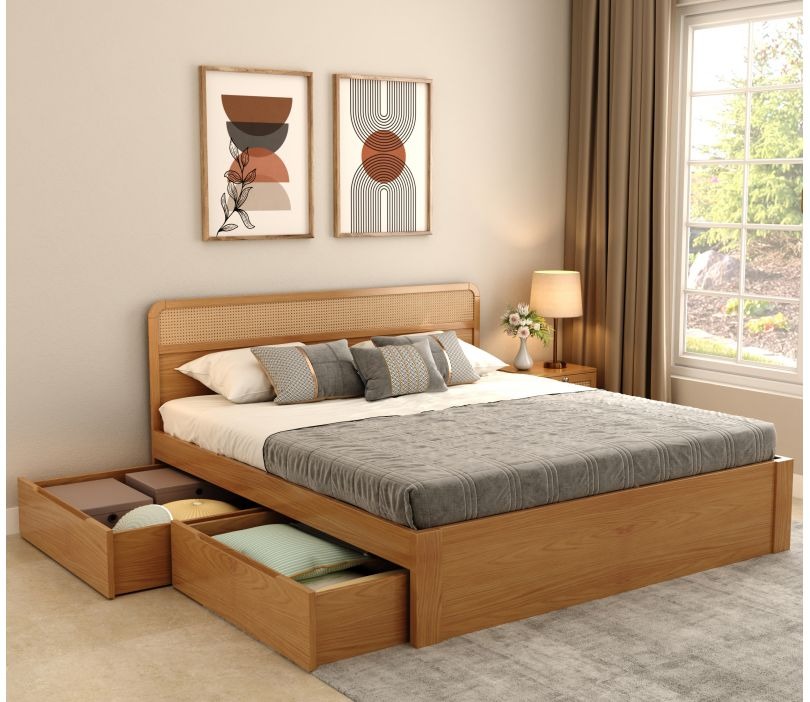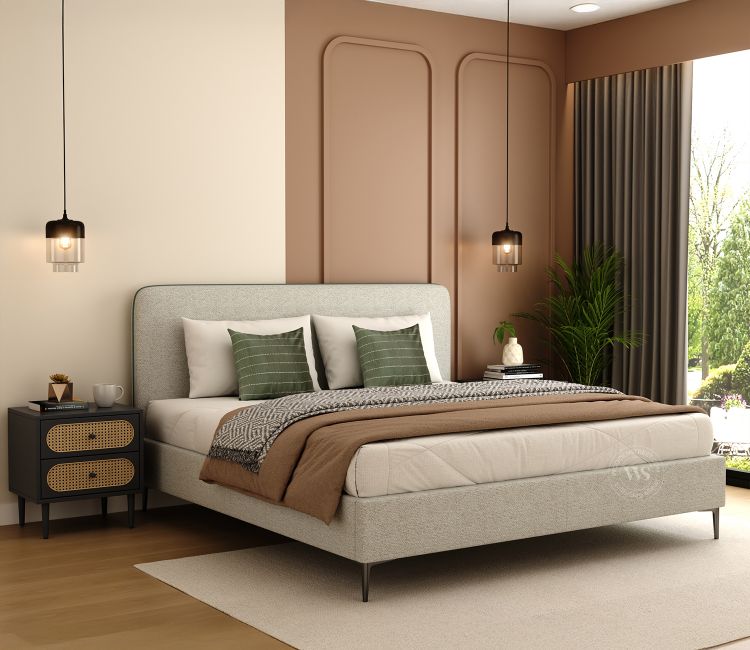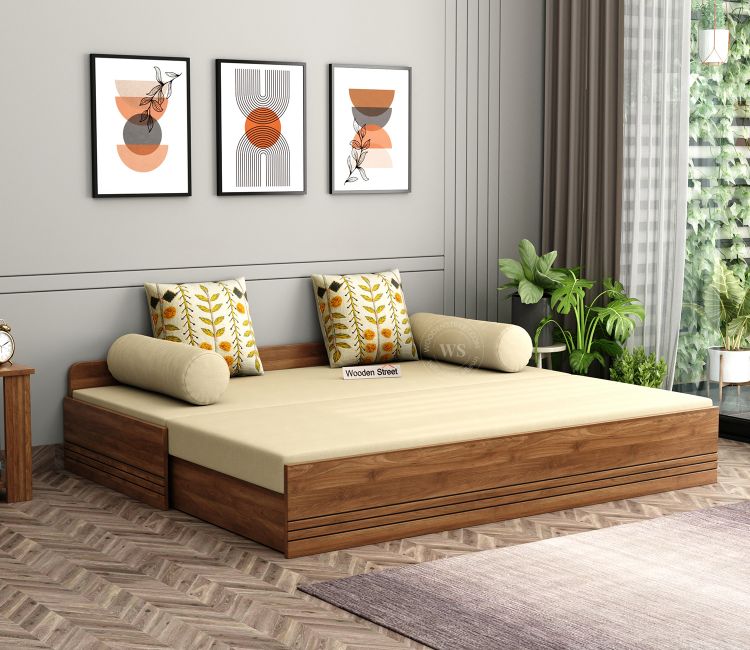When it comes to designing your bedroom, the bed serves as the centerpiece, setting the tone for the entire space. The choice between classic and contemporary bed designs can significantly influence the ambiance and functionality of your room. Understanding the characteristics, advantages, and considerations of each style will help you make an informed decision that aligns with your personal taste and lifestyle needs.
Understanding Classic Bed Designs
Timeless Elegance and Craftsmanship
Classic bed designs are rooted in traditional aesthetics, often characterized by intricate details, rich materials, and a sense of grandeur. These beds typically feature:
-
Ornate Headboards and Footboards: Elaborate carvings, tufted upholstery, or gilded accents that add a touch of luxury.
-
Rich Wood Finishes: Mahogany, walnut, and oak are commonly used, showcasing natural grains and deep hues.
-
Traditional Silhouettes: Four-poster, sleigh, and canopy beds are staples of classic design.
Advantages of Classic Bed Designs
-
Timeless Appeal: Their enduring style ensures they remain relevant across changing trends.
-
Craftsmanship: Often handcrafted, these modern bed design exhibit exceptional quality and attention to detail.
-
Statement Pieces: Their bold presence can serve as the focal point of a room.
Considerations
-
Space Requirements: Larger designs may not be suitable for smaller rooms.
-
Maintenance: Some materials may require regular upkeep to maintain their appearance.
Exploring Contemporary Bed Designs
Sleek, Functional, and Minimalist
Contemporary bed designs embrace modern aesthetics, focusing on simplicity, functionality, and clean lines. Key features include:
-
Minimalist Frames: Platform beds with low profiles and simple structures.
-
Neutral Color Palettes: Use of whites, blacks, grays, and earth tones to create a serene environment.
-
Innovative Materials: Incorporation of materials like metal, glass, and engineered wood.
Advantages of Contemporary Bed Designs
-
Space-Saving: Ideal for smaller spaces due to their compact nature.
-
Versatility: Easily complements various interior styles, from industrial to Scandinavian.
-
Low Maintenance: Simpler designs often require less upkeep.
Considerations
-
Less Ornamentation: May lack the intricate details found in classic designs.
-
Durability: Some materials may not offer the same longevity as traditional woods.
Comparing Classic and Contemporary Bed Designs
| Aspect | Classic Bed Design | Contemporary Bed Design |
|---|---|---|
| Aesthetic | Ornate, traditional | Sleek, minimalist |
| Materials | Rich woods, upholstered elements | Metal, glass, engineered wood |
| Size | Larger, statement pieces | Compact, space-saving |
| Maintenance | May require regular upkeep | Generally low maintenance |
| Longevity | Timeless appeal | Trendy, may evolve with time |
| Customization | High, with intricate details | Moderate, focusing on functionality |
Choosing the Right Bed Design for Your Space
Selecting between classic and contemporary bed designs depends on various factors:
-
Room Size: Larger rooms can accommodate the grandeur of classic beds, while smaller spaces benefit from the compactness of contemporary designs.
-
Existing Décor: Consider how the bed will complement existing furniture and color schemes.
-
Personal Style: Your personal taste plays a crucial role in determining the bed’s suitability.
-
Budget: Classic beds may come at a higher price point due to craftsmanship, whereas contemporary beds can offer more affordable options.
Incorporating Simple Bed Designs
For those seeking a balance between style and functionality, simple bed designs offer a versatile solution. These designs focus on clean lines and minimalistic features, making them adaptable to various interior styles. Incorporating elements like neutral bedding, subtle textures, and functional accessories can enhance the overall aesthetic without overwhelming the space.
Embracing Modern Bed Designs
Modern bed designs push the boundaries of traditional concepts, introducing innovative structures and materials. Features such as floating frames, integrated lighting, and modular components cater to contemporary lifestyles. These designs not only serve as sleeping platforms but also as multifunctional pieces that adapt to changing needs.
Staying Updated with Latest Bed Design Trends
The world of bed design is continually evolving, with new trends emerging each year. Keeping an eye on the latest developments ensures that your bedroom remains stylish and functional. In 2025, trends such as sustainable materials, smart technology integration, and customizable features are gaining popularity. Incorporating these elements can future-proof your bedroom and align it with current design movements.
Final Thoughts
Choosing between classic and contemporary bed designs is a personal decision that reflects your style preferences and practical needs. Classic designs offer timeless elegance and craftsmanship, while contemporary designs provide sleek functionality and modern appeal. By considering factors like room size, existing décor, and personal taste, you can select a bed design that transforms your bedroom into a sanctuary of comfort and style.
Remember, the bed is more than just a place to sleep; it’s a central element that influences the overall ambiance of your bedroom. Whether you lean towards the opulence of classic designs or the simplicity of contemporary styles, ensure that your choice resonates with your personality and enhances your living space.
FAQs
1. What is the difference between classic and contemporary bed designs?
Classic bed designs focus on traditional aesthetics, ornate details, and rich materials, while contemporary bed designs emphasize clean lines, minimalist style, and modern functionality.
2. Which bed design is better for small bedrooms?
Contemporary bed designs are ideal for small bedrooms due to their compact, space-saving structures and minimalistic style.
3. Are classic bed designs more expensive than contemporary beds?
Yes, classic beds often cost more because of the intricate craftsmanship and premium materials used, whereas contemporary beds are generally more affordable and easier to maintain.
4. Can simple bed designs fit both modern and traditional interiors?
Absolutely. Simple bed designs are versatile and can blend seamlessly with both classic and contemporary bedroom setups.
5. How do I choose the right bed design for my bedroom?
Consider factors like room size, existing décor, personal style, and budget. Classic beds suit larger rooms and traditional interiors, while contemporary beds work well in modern, compact spaces.
6. What are the latest trends in bed design for 2025?
Trending bed designs in 2025 include sustainable materials, smart beds with integrated technology, floating frames, and customizable modular designs.
7. Are modern bed designs functional as well as stylish?
Yes, modern bed designs often include features like built-in storage, adjustable frames, or multifunctional layouts, combining style with practicality.
8. Where can I find bed design photos for inspiration?
You can explore design websites, interior design magazines, or furniture brand galleries to view bed design photos and get ideas for your bedroom.




